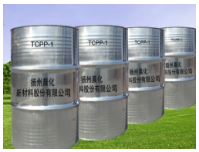Rotaru et al. Synthesized a new polyether polyol with high nitrogen content and good thermal stability by using Mannich, two ethanolamine, paraformaldehyde, cyanuric acid and propylene oxide. The PUF foam was prepared by Mannich polyol. The results show that because of the existence of isocyanide ring in the PU foam system, the PUF foaming by the Mannich polyol has better mechanical strength, and has better thermal stability and higher flame retardant efficiency than the traditional aliphatic PU foam system.
Paciorek Sadowska j et al. Synthesized a kind of reactive boron containing flame-retardant polyol by using N, n ′ - di (methylene epoxy-2-hydroxyethyl) urea and boric acid derivatives. Compared with the standard PUF, the PUF prepared by this kind of boron containing flame-retardant polyol increased from 241.9 kPa to 398.7 kPa when the mass fraction of boron containing polyol increased from 1% to 4%.

The flame test shows that the PUF with boron containing polyol can reach the self extinguishing level, and its retention can reach 91.2%, while the retention of standard PUF is only 67.3%. The results show that the boron containing flame retardant polyol is not only the raw material of polyol reacting with isocyanate, but also the boron and chlorine in PUF structure can play the role of flame retardant. Yanchuk [32] and others prepared a series of vinyldiphosphate salts, and applied them to PUF to improve the flame retardant performance of PUF.
The results showed that the flammability of PUF decreased significantly with the increase of the content of VDP, and it was extinguished immediately after ignition. Biomass resources are abundant and renewable in nature. With the introduction of various environmental protection laws and the improvement of people's awareness of energy conservation, the biomass PUF has attracted people's attention. Melissa heinen et al. Prepared phosphorylated polyols by the reaction of epoxy soybean oil extracted from plants with phosphoric acid, then reacted with glycerol and glycol polyester in different proportion, and obtained phosphorylated PUF with pentane as foaming agent. SEM, sdt-ftir and flammability test results show that the flame retardancy of the phosphorylated PUF is as good as that of commercial products, and the LOI of the phosphorylated PUF is even higher.
Magnesium hydroxide flame retardant may have some accidents in the application stage, so it is very necessary to make full preparations before use, which can not only improve the flame retardant effect of the flame retardant, but also make the whole process more safe. The precautions are as follows:
1. Sample test before flame retardant. It is necessary to take some samples for flame retardant test, which is mainly to test whether the flame retardant can reach the specified flame retardant standard, and also to test whether the flame retardant is suitable for the flame retardant material, so as to avoid wasting the flame retardant.
2. Before flame retardant, the surface of base material shall be cleaned properly, and the surface shall be free of oil, water, dust, etc.
3. Before flame retardant, understand the use method, temperature and flame retardant time of the flame retardant, so as to avoid wasting the flame retardant and materials.
In order to prevent the waste of flame retardant and the occurrence of safety problems, it is necessary to pay enough attention before and after the use of magnesium hydroxide flame retardant.